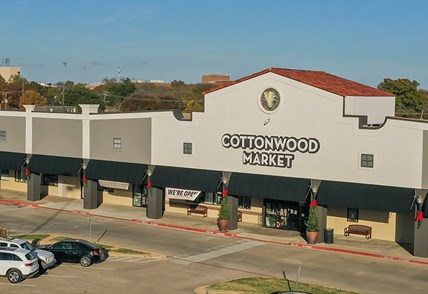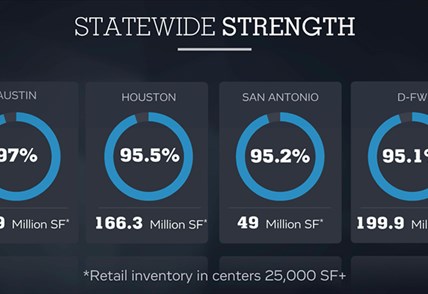By Marcus Shaffer, SVP, Weitzman
San Antonio’s strong, steady economy is the biggest reason for our strong balance of retail supply and demand. We’re at near-full employment with an unemployment rate of only 3.6 percent, and that’s keeping our single- and multi-family markets healthy. All of that attracts retailers’ interest and attracts major concepts like IKEA to our market.
In terms of new space, we reflect the statewide, even nationwide, trend of new construction being dominated by anchors with very limited “spec” small-shop space. That keeps overall construction in check. We do expect to see new space additions pick up in 2018 and 2019 as large projects in the pipeline – like the IKEA-anchored Live Oak Town Center – and the expansion of existing projects come online.
For 2017, the market is on track to add only about 360,000 square feet of new space, based on a Weitzman review of conditions as of mid-year. During 2016, the market added approximately 1.2 million square feet of space in new and expanded projects.
The entire market incorporates a total inventory of 45.4 million square feet of multi-tenant retail space in centers with 25,000 square feet or more.
San Antonio also is experiencing strong mixed-use activity, most notably in the continued expansion of The Pearl, with office, retail and residential space. Urban mixed-use in the works include projects downtown, along the River Walk and along the Broadway corridor.
We’re in an extremely strong market for new multi-family and single-family construction, which is a result of healthy job and population growth. That’s why grocers like H-E-B and Walmart have dominated construction over the past several years. Restaurants remain one of the stronger categories as well, and we’re getting new entrants New York-based Shake Shack and Dallas-based The Rustic and Gloria’s and seeing expansions from concepts like Stone Werks Big Rock Grille, Taco Palenque and others. Demand for space is also generated by beauty, health and wellness, fitness, medical and dental and services.




